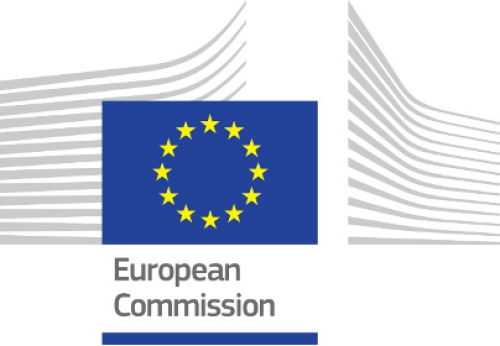
The SOCRATES project "Assessment of liquid source term of accidental post management phase" addresses gaps in the understanding of the liquid source term during severe nuclear accidents and offers innovative solutions to mitigate and monitor the release of radionuclides into the enviroment.
The project contributes to the mid-to-long-term mangement of nuclear power plants after a severe accident by enhancing safety, environmental protection, safe waste management and public well-being.
The main contributions of the project well-being.
The main constributions of the project partners are:
PSS contributes with its knowledge on the severe accidents at TMI-2 and Fukushima Daiichi to the preparation of a State-of-the-Art report on liquid source term which, in addition to review of the measurement and simulation data from past severe accidents regarding liquid source term, also includes an evaluation of the capability of various coode systems to consider the chemical speciation in liquid pools.
The report also deals with a review of SAM stratgegies on liquid source term.
PSS will provide a model for corium leaching to get information on delayed and applies the model in simulations of severe accident scenarios.
Furthermore, PSS is involved in the creation of content relating to the project results for educational purposes.
Link to the Homepage:
https://socrates-euratom.eu/
Laufzeit:
2024 – 2028
Ansprechpartner /in:
Prof. Dr.-Ing. Marco K. Koch
Dr.-Ing. Tobias Jankowski
M. Sc. Jonas Rehrmann
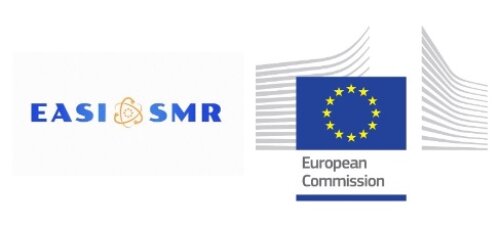
Research and development in the field of Small Modular Reactors (SMR) is currently in a dynamic state. To support this research and the implementation of these technologies, the EU project EASI-SMR addresses safety issues in the field of light water SMRs. The project activities aim to ensure that this type of reactor can be designed, built and commissioned in the safest possible way and in compliance with existing regulations. EASI-SMR will address safety issues related to the following LW-SMR innovations:
PSS is participating in the project as one of 38 interdisciplinary partners from 16 countries. The main task is to participate in benchmarks of different experiments carried out within the project to evaluate the capability of the simulation codes developed and used in Europe and to verify the requirements for the simulation of passive systems in SMRs.
Link to the Homepage:
https://easi-smr.eu/
Duration:
2024 – 2028
Contact:
Prof. Dr.-Ing. M. K. Koch
M. Sc. Miriam Müer
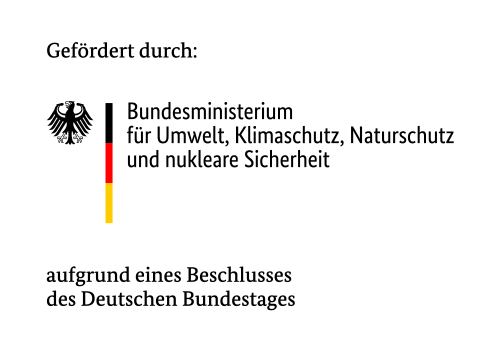
The joint project "Analysis of the malfunction and accident behavior of SMRs with the system code AC² (ASUS)" is a follow-up project to the VASiL project, which was successfully completed in 2023, and is being carried out in the same constellation by the three institutions PSS, GRS and IKE, with PSS as coordinator. The objectives of the project include the expansion and improvement of AC² for the simulation of small modular reactors (SMRs). The focus is on promising designs that have the greatest chances of realization in neighboring German countries.
As part of the VP-ASUS-PSS sub-project, PSS is focusing on the further development of the AC² model basis with regard to the pressure loss calculation of specific components in integral pressurized water reactors (iDWR), the phenomena relevant to helical heat exchangers and accident-tolerant cladding tube materials. Validation is carried out on the basis of suitable experiments and with the help of plausibility analyses. In addition, fault and accident simulations are carried out using the example of a generic iDWR in order to verify the suitability of AC² for simulating relevant phenomena in SMRs.
Duration:
2024 – 2027
Contact:
Prof. Dr.-Ing. M. K. Koch
M. Sc. Gregor Stahlberg
M. Sc. Julia Krieger

As part of the research project "Modelling of risk-relevant late-phase phenomena in light water reactors" (MORIS), work on selected topics of the project "Analysis and external validation of the AC² model basis" (AVAMO) is being continued. The work serves to further develop models for simulating and analysing risk-relevant phenomena in the late phase of a postulated accident in a light water reactor. The focus of the research is on the behaviour and coolability of degraded and refragmented core materials (debris beds) relocated to the lower reactor plenum and as well as the release of fission products from melt accumulations from in- and ex-vessel areas. Further on, the phenomena mentioned will be analysed using simulations of the accident in Unit 2 of the Three-Mile-Island (TMI-2) nuclear power plant with the AC² simulation program package on a plant scale using various meshing methods. The planned work includes the validation and optimisation of existing models to describe the selected risk-relevant phenomena and the development of models to simulate other relevant (partial) phenomena under possibly varying boundary conditions. In addition to the US integral code MELCOR, the European integral code ASTEC will also be used for comparative plausibility analyses in order to obtain an additional classification of the simulation results.
Duration:
2024 – 2027
Contact:
Prof. Dr.-Ing. M. K. Koch
M. Sc. Florian Krist
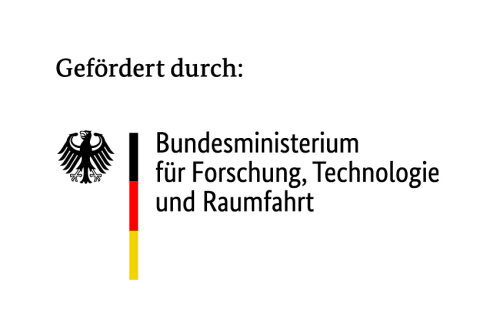
The objective of the joint project InnoPhase "Innovative methods of AI for the specification of highly complex processes in the late accident phase" is the development and application of Machine Learning (ML) methods for the of late phase phenomena of postulated severe accidents in nuclear reactors. InnoPhase is realized in cooperation with the University of Stuttgart (Institute for Nuclear Energetics and Energy Systems (IKE) and Chair Machine Learning for Simulation Science (MLSim)) and the associated partner Gesellschaft für Anlagen- und Reaktorsicherheit (GRS) gGmbH.
In the project, PSS focuses on the long-term cooling of debris particles. By using ML methods, the calculation time of complex, multiphase processes in the late accident phase should be significantly reduced compared to available models in system codes. The work includes the development and validation of a fast-running surrogate model for the simulation of debris bed behaviour for reactor safety analysis. For this purpose, ML models will be trained and validated. The required data for the training is provided by simulations of a validated detailed model (COCOMO-3D). This work is based on the further development of ML methods that are suitable for typical problems in the simulation of reactor accidents.
A further focus is the evaluative analysis of the modelling of debris bed cooling in accident analysis codes in order to identify modelling deficits, to point out relevant experiments and to define corresponding parameter ranges of the ML models. The extension of the accident analysis code model basis is then carried out by integration and optimization of the developed surrogate models, whereby the implementation is carried out on the base of interfaces to be defined and a coupling concept. Finally, the new models are validated by a comparative evaluation with suitable test series. The knowledge gained will then be integrated into the ongoing development of the ML models.
Duration:
2023 – 2027
Contact:
Prof. Dr.-Ing. M. K. Koch
M. Sc. Juliane Neuhaus

Due to the rapidly advancing developments in the field of Small Modular Reactors, the objective of the EU project SASPAM-SA is to demonstrate the capability of integral pressurized water reactors (iDWR) to cope with postulated severe accidents. To this end, the focus is on developing appropriate data sets for analyzing iDWRs with system codes.
The EU project is being worked on internationally by 23 partners from universities, research centers and industry. It is coordinated by ENEA (Agenzia nazionale per le nuove tecnologie, l'energia e lo sviluppo economico sostenibile). The project has a duration of 4 years, starts in October 2022 and is funded by the European Commission.
Within the project, the Plant Simulation and Safety (PSS) working group is responsible for the overall development of an iDWR dataset that will be made available to the project partners for further analysis. Simulations and analyses will be performed on various accident and incident scenarios, as well as comparative analyses with innovative Accident Tolerant Fuel (ATF) concepts. For the simulation, the nationally developed program package AC² of GRS is used. The results are to contribute to increasing the national competences in the field of SMR and, in the future, the safety of these reactor types in the European environment by means of robust simulations.
Duration:
2022 – 2026
Contact:
Prof. Dr.-Ing. M. K. Koch
Dr.-Ing. Tobias Jankowski
M. Sc. Julia Krieger
M. Sc. Gregor Stahlberg

The AMHYCO project aims to improve the Severe Accident Management Guidelines for both in-vessel and ex-vessel phases with respect to combustible gases risk management. Therefor both numerical and experimental results will be used.
The focus is on H2/CO distribution and combustion as well as the behaviour of Passive Autocatalytic Recombiners (PARs) under realistic accidental conditions. Based on the experimental results the predictability of numerical tools
(LP, 3D containment and CFD-Codes) shall be improved.
Besides the analyses of existing H2/CO combustion correlations in the LP-Code package AC2-COCOSYS the main task of PSS in the project is to perform a multitude of plant calculations of a generic German PWR and to implement new H2/CO engineering correlations into AC2 as well as to evaluate the new H2/CO combustion risk.
The AMHYCO project is funded by the European Commission and will be jointly carried out by 12 project partners from six European countries and Canada.
www.amhyco.eu
Duration:
2020 – 2025
Contact:
Prof. Dr.-Ing. M. K. Koch
M. Sc. Miriam Müer
M. Sc. Johannes Hoffrichter
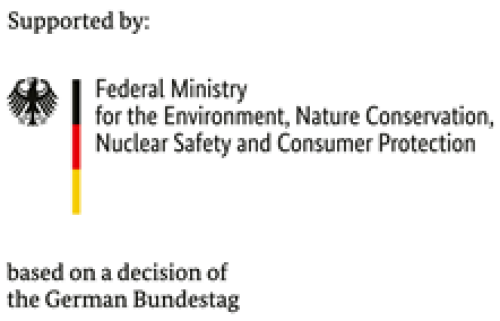
The work carried out in the research project "Analysis and external validation of the AC² model basis" (AVAMO) focuses on the targeted analysis and validation of selected modules of the AC² program system for the simulation of accident-relevant in- and ex-vessel-phenomena. The selected topics have been chosen in close coordination with the code developer.
The works on the validation and evaluation of the AC² - COCOSYS model basis include the models implemented in the current version of the code for the description of hydrogen combustion phenomena and ex-vessel phenomena occurring during MCCI (Molten Core Concrete Interaction). In addition, the aerosol behavior in the containment will be reviewed and analyzed using the newly implemented NEWAFP module.
For the investigation of the AC² - ATHLET condensation model basis, a further analysis with focus on macrocavitation driven water hammer phenomena will be performed and the applicability of the code to represent the condensation effects occurring during this process will be investigated. The works are complemented by comparative CFD simulations using the OpenFOAM tool.
With the works on the simulation of late-phase phenomena with AC² - ATHLET-CD, the model basis will be analyzed with regard to the adequate simulation of the fission product release from melt pools in the lower reactor plenum, accident-tolerant fuels and debris beds in the lower plenum. In addition to validation works, an extension of the model basis is also planned for selected topics. Simulations with the accident analysis code ASTEC supplements the works carried out within the framework of the AC² - ATHLET-CD for the analysis of debris beds in the lower reactor plenum.
Duration:
2021 – 2024
Contact:
Prof. Dr.-Ing. M. K. Koch
M. Sc. Jan Peschel

The aim of the project is to provide an approach for estimating particle retention in a liquid template and to expand the experimental database and validate a venturi scrubber model in the containment code system COCOSYS also with regard to its applicability to different types of venturi nozzles. The project is carried out in close cooperation with the Institute for Energy and Climate Research - Nuclear Waste Management and Reactor Safety (IEK-6) of the Research Center Jülich (FZJ), which provides the SAAB test facility for performing complementary experimental work.
The provided approach as well as the validated venturi scrubber model will be upgraded within the scope of a plant engineering application.
Duration:
2021 – 2024
Contact:
Prof. Dr.-Ing. M. K. Koch
Dr.-Ing. Tobias Jankowski

The joint project "Extension and Validation of AC² for the Simulation of Innovative LW-SMR (VP-VASiL-RUB)" is being worked on by the three institutions GRS (Gesellschaft für Anlagen- und Reaktorsicherheit gGmbh), IKE (Institute for Nuclear Energetics and Energy Systems, University of Stuttgart) and the PSS working group. The overall objective of the project is to improve and validate the AC2 program system for the evaluation and analysis of Small Modular Reactors (SMR) with respect to heat removal by innovative heat exchangers and heat transfer at high containment walls.
At the present time, SMRs based on light water reactor technology have the greatest chances of realization, which makes it essential to build up and maintain knowledge of thermal-hydraulic phenomena in order to adequately represent the safety aspects of various nuclear power plant concepts. Within the framework of the subproject of the PSS working group, the model basis for the representation of helical heat exchangers of the thermohydraulic code ATHLET will be further developed.
The work is accompanied by comparative CFD analyses. In addition, an analysis of heat transfer on the outside of containment walls at plant scale will be performed using CFD simulations. Finally, selected passive residual heat removal chains of innovative reactor concepts of SMR are simulated with ATHLET.
Duration:
2020 – 2023
Contact:
Prof. Dr.-Ing. M. K. Koch
M. Sc. Julia Krieger
M. Sc. David Sonntag
The project IPRESCA aims at an expansion of the current state of the art and the experimental data basis in the research field of pool scrubbing in order to provide improved models for the implementation in system codes such as ASTEC, COCOSYS or MELCOR. International research activities are supposed to be used systematically for the validation and improvement of the models of current pool scrubbing codes. The available experimental and analytical information of current projects such as EC-PASSAM, EC-CESAM and OECD/NEA THAI-3 are used in the proposed activities when appropriate. In return, the knowledge basis constructed in IPRESCA is also made available through e.g. joint workshops and thus can be of use for the EC- and OECD-projects.
Participating organisations:
Institute for Nuclear Researches and Nuclear Energy (INRNE), Bulgaria; Canadian Nuclear Laboratories (CNL), Canada; China Institute of Atomic Energy (CIAE), China; Harbin Engineering University (HEU), China; Huazhong University of Science and Technology (HUST), China; North China Electric Power University (NCEPU), China; Nuclear Power Institute of China (NPIC), China; Shanghai Jiao Tong University (SJTU), China; State Power Investment Corporation Central Research Institute (SPICRI), China; ÚJV Řež, a. s. (UJV), Czech Republic; Teknologian tutkimuskeskus VTT Oy, Finland; Institut de Radioprotection et de Sûreté Nucléaire (IRSN), France; AREVA GmbH, Germany; Gesellschaft für Anlagen- und Reaktorsicherheit (GRS) gGmbH, Germany; Helmholtz-Zentrum Dresden-Rossendorf (HZDR), Germany; Karlsruhe Institute of Technology (KIT), Germany; Hochschule Mannheim University of Applied Sciences, Germany; Ruhr-Universität Bochum (RUB), Germany; Bhabha Atomic Research Centre (BARC), India; Indian Institute of Technology Bombay (IITB), India; Nuclear and Industrial Engineering S.r.l. (NINE), Italy; Politecnico di Milano, Italy; Japan Atomic Energy Agency (JAEA), Japan; The Institute of Applied Energy (IAE), Japan; Central Research Institute of Electric Power Industry (CRIEPI), Japan; Korea Atomic Energy Research Institute (KAERI), Korea; Korea Hydro and Nuclear Power Co., Ltd (KHNP); Korea; Korea Institute of Nuclear Safety (KINS), Korea; FNC Technology Co. Ltd. (FNC), Korea; University of Luxembourg, Luxembourg; The Jožef Stefan Institute (JSI), Slovenia; Centro de Investigaciones Energéticas, Medioambientales y Tecnológicas (CIEMAT), Spain; Paul Scherrer Institut (PSI), Switzerland; Purdue University, West Lafayette, Indiana, USA; University of Missouri (MIZZOU), USA.
Duration:
2017 – 2023
Contact:
Prof. Dr.-Ing. M. K. Koch
M. Sc. Tobias Jankowski
In the last decade the system code ASTEC (Accident Source Term Evaluation Code) has been developed further intensively as a reference for the severe accident analysis codes for water-cooled reactors within the scope of the “SARNET European Network of Excellence”, the following OECD/NEA/CSNI research projects as well as most recently the project CESAM (Code for European Severe Accident Management) in the 7th research framework of the European Commission. The working group Plant Simulation and Safety actively contributed to a multitude of these research projects. Most recently, a broad base of plant data sets, next to the phenomenological validation and further development, was developed in CESAM, which makes it possible to simulate and analyse emergency actions in case of a severe accident, referred to as Severe Accident Management (SAM).
The goal of the project ASCOM (ASTEC COMmunity) is to continue these activities via the preservation and strengthening of the cooperation. By doing so the reliability of ASTEC concerning the presentability is expected to increase due to the simulation of severe accidents and their prevention and mitigation with SAM on the one hand and the validation and further development of physical and chemical models on the other hand.
The project is defrayed by the NUGENIA Association and the project consortium is made up of 25 international institutions: Institut de Radioprotection et de Sûreté Nucléaire (IRSN, France); Centro de Investigaciones Energeticas Medio Ambientales y Tecnologicas (CIEMAT, Spain); Electricité de France (R&D division) (EDF, France); Agenzia Nazionale per le nuove tecnologie, l’energia e lo sviluppo economico sostenibile (ENEA, Italy); Energorisk Ltd. (Energorisk, Ukraine); Fakultet elektrotehnike i računarstva (FER, Croatia); Helmholtz-Zentrum Dresden-Rossendorf (HZDR, Germany); Institutul de Cercetari Nucleare Pitesti (ICN, Romania); Institut "Jožef Stefan" (IJS, Slovenia); Institute for Nuclear Research and Nuclear Energy (INRNE, Bulgaria); Inzinierska Vypoctova Spolocnost Trnava s.r.o. (IVS, Slovakia); Joint Research Centre (JRC, Europäische Kommission); Karlsruhe Institute of Technology (KIT, Germany); Lithuanian Energy Institute (LEI, Lithuania); National Research Center «Kurchatov Institute» (NRCKI, Russia); Nuclear and Radiation Safety Center (NSC, China); Nukleáris Biztonsági Kutatóintézet (NUBIKI, Hungary); National University of Singapore (NUS, Singapore); Ruhr-Universität Bochum (RUB, Germany); Scientific and Engineering Centre for Nuclear and Radiation Safety (SECNRS, Russia); Tractebel Engie (TRACTEBEL, Belgium); Ustav Jaderneho Vyzkumu Rez a.s. (UJV, Czech Republic); Universita di Pisa (UNIPI, Italy); University of Utah (UTAH, U.S.A.); VTT Technical Research Centre of Finland Ltd. (VTT, Finland).
Duration:
2018 – 2022
Contact:
Prof. Dr.-Ing. M. K. Koch
M. Sc. Jan Peschel
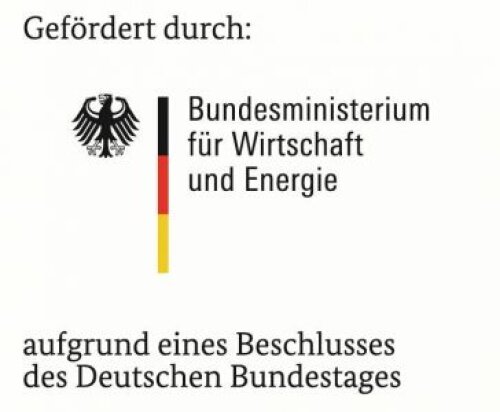
Aim of the project is the focused analysis of OpenFOAM (Open Source Field Operation and Manipulation) for the calculation of relevant pressure shock phenomena and here especially the quantitative and qualitative depiction, spreading and the impact on surrounding structures for the development of possible model optimisations and developments. The validation and evaluation of the current model basis of the CFD-Tool can be supported and where appropriate developed further through the direct comparison with the experimental data and the simulation results of the code ATHLET.
Duration:
2018 – 2021
Contact:
Prof. Dr.-Ing. M. K. Koch
Dr.-Ing. Christoph Bratfisch
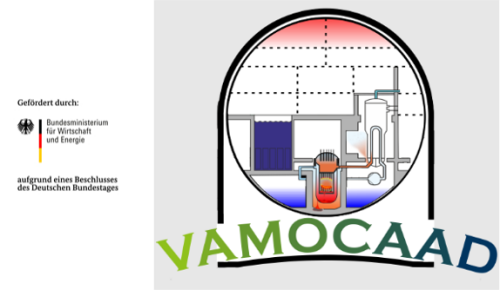
One main goal of the project “External validation and model analysis of the code systems AC² and ASTEC with supporting CFD-detail analyses (VAMOCAAD)” is the targeted analysis and validation of specific modules of AC² in order to calculate accident related in- and ex-vessel-phenomena.
This undertaking can be divided into four blocks. The first one contains the external validation of the AC² modules ATHLET, ATHLET-CD and COCOSYS. In the second block the ability to simulate the reflooding of degraded cores is validated using the severe accident analysis code ASTEC and selected comparative calculations are executed using AC² and ASTEC. This also serves as a preparation for the implementation of comparative generic plant calculations with both codes in the third block. In addition, CFD tools are used in the fourth block to analyse detailed aspects of the phenomena examined in the first focal point. The choice of topics takes place in close coordination with the code-developers and the weighting in the EU-SARP tables.
Within the scope of the external validation work the ability to simulate hydrogen combustion, ex-vessel phenomena during the MCCI as well as wet resuspension is analysed using the latest AC²-COCOSYS version. The external validation of the code systems AC²-ATHLET and AC²-ATHLET-CD stresses wall friction phenomena during blast wave pacing, water hammer phenomena under the impact of condensation, as well as the melt distribution inside of the lower plenum and the release and distribution of fission products.
In the course of the CFD examinations additional simulations regarding detailed aspects during the hydrogen combustion, the water hammer and reflooding phenomena are conducted. The results of the CFD works are supposed to contribute to the improvement of the code system AC². The work’s findings concerning the single phenomena feed into the plant calculations, which are to be performed.
Duration:
2018 – 2021
Contact:
Prof. Dr.-Ing. M. K. Koch

The model bases of the accident analysis codes ASTEC (Accident Source Term Evaluation Code), ATHLET (Analysis of Thermal-hydraulics of Leaks and Transients) as well as ATHLET-CD (Analysis of Thermal-hydraulics of Leaks and Transients – Core Degradation) are analysed and evaluated via the use of selected experiments. The project contributes to the further advancement of the codes with regard to the evaluation of the modelling of core degradation phases (ASTEC, ATHLET-CD) as well as water hammer phenomena (ATHLET) by an external code user. Furthermore, the project is realised in coordination with the code developer and serves the generation of new findings concerning the processes and physical phenomena in a light-water reactor during possible accidents as well as the applicability of ATHLET to evaluate water hammer phenomena in energy- and process-relevant pipe systems.
Duration:
2016 – 2019
Contact:
Prof. Dr.-Ing. M. K. Koch
Dr.-Ing. Christoph Bratfisch

One of the main goals of the presented project is the focused analysis and validation of selected COCOSYS-programme modules for the calculation of accident relevant ex-vessel phenomena, such as the molten-core-concrete-interaction (MCCI) and the release of fission products, the depiction and impact of hydrogen concentrations through impulse-dominated effects, as well as the simulation of resuspension phenomena and their effect on the source-term. The obtained results are supposed to support the quality verification of the programme by generating recommendations for use, as well as contributing to the further development of the programme.
Duration:
2016 – 2018
Contact:
Prof. Dr.-Ing. M. K. Koch

CESAM (Code for European Severe Accident Management) is a R&D project aiming at the improvement of the European reference code ASTEC (Accident Source Term Evaluation Code) towards a usage in severe accident management analysis for nuclear power plants (NPP). Research activities in this project will jointly be carried out by the 18 project partners from 12 European countries and India. At first, current ASTEC modeling capabilities for the relevant phenomena during severe accidents are assessed providing recommendations for code development and model improvements to be performed in this project. The improved ASTEC models will then be validated against experiments and assessed for reactor applications. ASTEC reference datasets for the main generic types of NPPs (PWR, BWR, CANDU) will jointly be prepared by the partners. Plant calculations for various accident scenarios will be performed in order to analyze possible improvements of SAM measures and to provide appropriate guidance on how to apply ASTEC for plant analysis.
Duration:
2013 – 2017
Contact:
Prof. Dr.-Ing. M. K. Koch
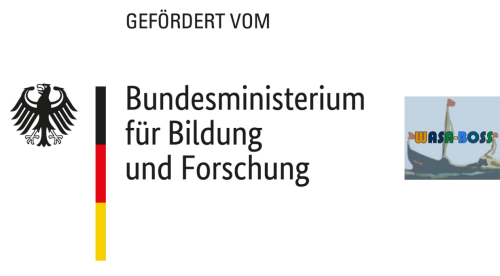
Within the scope of this project a harmonisation of the relevant data and information regarding the accident course in the nuclear power plant Fukushima-Daiichi and the multiple available analyses is generated in order to develop a comparative overview of the state of the present data situation concerning the accident. This information serves as a basis for the simulation of the accident with the severe accident analysis code ATHLET-CD. By analysing the simulated plant conduct the code’s capacity to depict the later accident phase with massive core degradation can be evaluated and developed further systematically.
Duration:
2013 – 2016
Contact:
Prof. Dr.-Ing. M. K. Koch

Within the scope of this research project selected models of the German severe accident analysis codes ATHLET-CD and COCOSYS are focused on at first. The works with COCOSYS include the simulation of spray jet- and wall-boiling phenomena. Works to simulate core degradation phenomena are planned with ATHLET-CD. For doing that additional comparative calculations are conducted with the American code MELCOR. Furthermore, a coupled use of ATHLET-CD and COCOSYS in order to evaluate the model basis in the plant technical implementation is performed. These activities are also complemented with comparative analyses with MELCOR.
Duration:
2013 – 2016
Contact:
Prof. Dr.-Ing. M. K. Koch

Within the framework of the project models of the Accident Source Term Evaluation Code (ASTEC) for the depiction of “molten-core-concrete-interactions” and the “aerosol- and fission product-release from a melt” are analysed and validated with the use of test simulations. This is complemented by the simulation of a hypothetical severe accident scenario in a generic light-water reactor.
Duration:
2012 – 2015
Contact:
Prof. Dr.-Ing. M. K. Koch

Validation and interpretation of the ATHLET-CD model basis. In order to analyse and evaluate the model basis, we conduct simulation calculations of relevant experiments – among them some from the PHEBUS-, CORA-, QUENCH- and the PARAMETER-test series – and examine the transferability of the model basis to the implementation on reactor calculations.
Contact:
Prof. Dr.-Ing. M. K. Koch